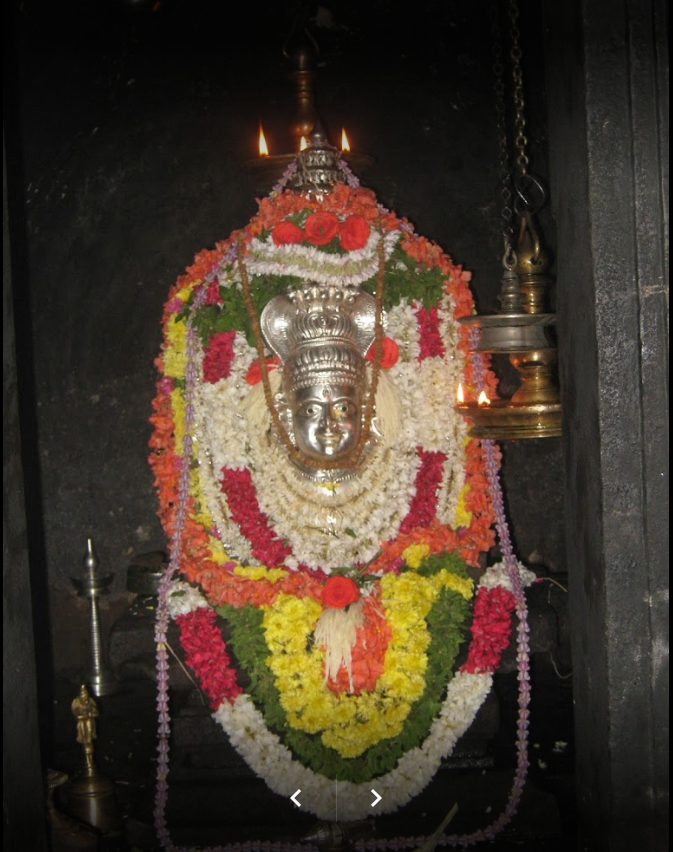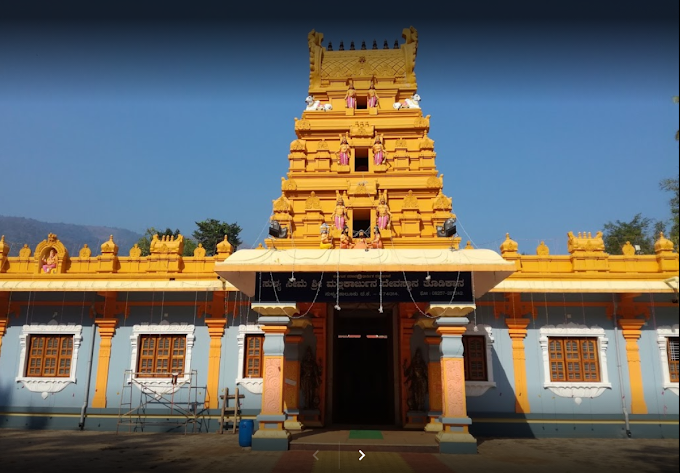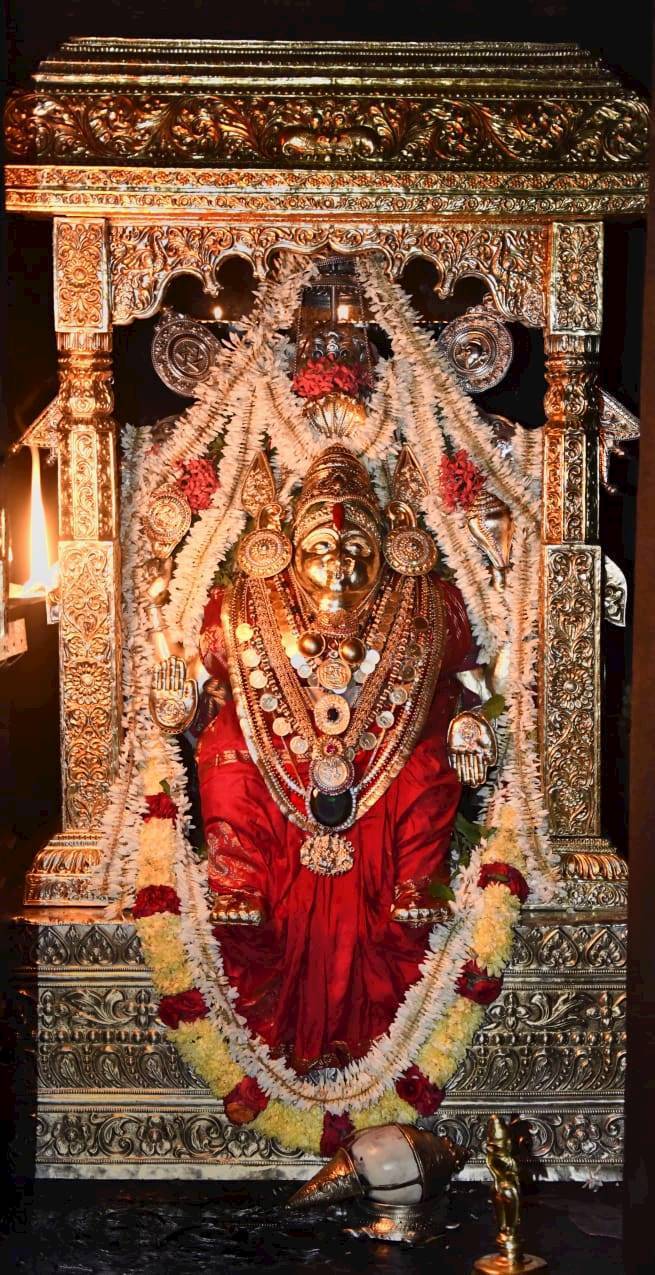Jagannath Temple, Puri
Shreekshetra is one of the many names of Puri. Located on the shore of Bay of Bengal in the State of Odisha, this centre of pilgrimage is considered to be the Holiest of the Holy places in India as it is the most sacred eternal abode of Lord Jagannatha. In ancient scriptures, such as Skanda Purana and Brahma Purana, Lord Jagannatha is also referred to as Lord Purushottama and His sacred Abode, Puri, is named after the Lord Himself as Purushottama-kshetra. This holy kshetra, in fact, is proclaimed to be the sacred “body” (“Bapuh”) of the Lord Himself. The glory of Purushottama-kshetra is mentioned in the Skanda Purana in the following words:
“Although Lord Jagannatha is all pervading and is the source of all and there are also other holy places which destroy all sins, yet this holy place is superior as it has become the body of this Supreme Being. He Himself is present there assuming a Form and has indeed made that place known by His own name”. (Utkala-khanda, Chapter 1, verses 8 & 9).
Puri is one of the four “Dhams” or most sacred places of pilgrimage in India for Hindus. The great reformer of Sanatana Vaidika Dharma, Bhagvatapada Adi Shankaracharya declared these four sacred Dhams to be Jagannatha Puri in the east, Dwarika in the west, Badrinath in the north and Rameswaram in the south. However, the primal position which Adi Shankaracharya accorded to Puri is evident when he installed his senior-most disciple, Padmapada, as the first Acharya of Shree Goverdhan Peeth established by him in Puri and declared Rigveda (the first and most sacred among the four Vedas) to be the scripture for propagation by this Peeth.
According to Brahma Purana, Purushottama kshetra is spread over ten yojanas (90 miles) and a width of five kosas (ten miles). The sacred kshetra is also known as “Shankha-kshetra”, “Neelachala”, “Uddiyana-peetha”,“Dasavatara-kshetra”, “Martya-Vaikuntha” etc. With the Holy Temple of Lord Jagannatha in the centre, the sacred Kshetra is divinely guarded by Ashta-Shivas (eight forms of Lord Shiva), Ashta-Shakti (eight forms of Goddess) and Ashta-Mahaveer (eight forms of Shree Hanuman) and contains innumerable sacred temples and holy sites. Five “Tirthas” (holy sites), namely, Markandeya sarovar, Shwetaganga sarovar, Narendra sarovar, Rohini-kunda and Mahodadhi (sea) as well as ashramas (hermitages) of four ancient Rishis, namely, Angira, Bhrugu, Kandu and Markandeya are situated within the kshetra. The great Acharyas of the various Vedic sampradayas, such as, Bhagavatpada Adi Shankaracharya, Shree Ramanujacharya and Shree Nimbarkacharya also established monastries of their respective sampradayas in this holy place.
Lord Jagannatha, as His very name signifies, is the Lord of the Universe (Jagat = Universe; Natha = Lord). He is also popularly known as Mahaprabhu (Maha = Great; Prabhu = Lord). The sacred scriptures of Sanatana Vaidika Dharma (popularly known as Hinduism) also refer to Him as Purushottama, The Supreme Divine Being (Purusha = Divine Being; Uttama = Supreme). The glory of Lord Jagannatha has been narrated in innumerable scriptures – from the Vedas (the earliest scriptures of mankind) to the Puranas and later literary compositions in Sanskrit and Odia languages. These scriptures leave no doubt that Lord Jagannatha is the One Omnipotent, Omnipresent and Omniscient Supreme God referred to as Paramatma (Supreme Self), Parameshwara (Supreme Lord) and Param-Brahman (Supreme Omnipresent God) in the scriptures of Sanatana Vaidika Dharma and invoked in infinite names and forms in and through diverse religious traditions and beliefs around the world. The philosophy and tradition of Lord Shree Jagannatha emphatically propound the fundamental principles of Hinduism: Ekam Sat Viprah Bahudha Vadanti (There is only one TRUTH, the Learned Ones speak about the same TRUTH in various ways) and Vasudhaiva kutumbakam (Entire humanity is the family of the One God).
According to Skanda-Purana (Vaishnava Khanda), which extensively narrates the tradition and heritage of Lord Jagannatha in the Section entitled Purushottama-kshetra Mahatmya or Utkala Khanda containing 60 chapters (3863 verses), the One Supreme Lord manifested in Shree Purushottama-kshetra (modern Puri) in four wooden (Daru) forms as Lord Balabhadra, Lord Jagannatha, Devi Subhadra and Chakra Sudarshana in the Satya-yuga of the second Chatur-yuga during the first Manvantara (the time period of Manu Swayambhuva) in the first day (Svetavaraha Kalpa) of the fifty-first year of Lord Brahma. We are now in the Kali-yuga of the 28th Chatur-yuga of the seventh Manu (Manu Vaivaswata). Thus, a period of more than six Manvantaras and 27 Chatur-yugas have gone by since the manifestation of the Lord in Purushottama-kshetra in His present (Daru) forms. According to the sacred scriptures, such as Shreemad Bhagavata Mahapurana, there are 71 Chatur-yugas in each Manvantara and in these Yugas, various Avataras (Divine Incarnations) of the Supreme Lord emanate from Him and, after performing Their Divine Leela for re-establishing Dharma,they merge back in Him. Lord Shree Jagannatha, therefore, eternally present in Purushottama-kshetra through all these Yugas, is not an Avatara. He is the Avatari – the Supreme Omnipresent God from whom all Divine Incarnations manifest in different ages according to His Divine Will. In the 28th Chapter of Skanda-Purana Purushottama-kshetra Mahatmya, Lord Brahma Himself reveals the true identity of Lord Shree Jagannatha when He instructs King Indradyumna with these words:
“Thinking it is a wooden image, O pre-eminent King, let there not be the idea in you that this is a mere image; this is verily the form of Supreme Brahman (Supreme Omnipresent God). As Param-Brahman takes away all sorrows and confers eternal bliss, He is known as Daru. According to the four Vedas therefore, the Lord is manifest in the form of Daru (sacred wood). He is the Creator of the entire Universe. He has also created Himself.” (Chapter 28, verses 39-41)
The Skanda-Purana further states that the Supreme Lord will remain in this Daru form from this the fifty-first year of Lord Brahma till the completion of Lord Brahma’s life-time of 100 years (that is,for the entire period of second Parardha). The scripture also states that during the first Parardha of Lord Brahma (that is, during the first 50 years of Lord Brahma’s life-time), the very same Supreme Lord was present in Shree Purushottama-kshetra in the Divine Neelamani Vigraha (Blue-sapphire gem-stone) Form of Lord Madhava (Lord Narayana-Vishnu-Jagannatha), Devi Mahalakshmi (Devi Subhadra), Lord Sesha Ananta (Lord Balabhadra)and Lord Sudarshana (Chakra Sudarshana).Similar narration is also found in other sacred scriptures. In a nutshell, therefore, the scriptures make it amply clear that Lord Jagannatha is none other than the One Supreme God on this earthly plane.
In His eternal Abode in Shree Jagannatha Temple in Puri, the Supreme Lord in His Four Daru Forms of Lord Balabhadra, Lord Jagannatha, Devi Subhadra and Chakra Sudarshan (Chaturdha Daru-Vigraha) are invoked and worshipped in a myriad of different ways. His rituals and festivals contain a syncretic blend of diverse modes of worship – from the Vedic and Tantric to the rituals of ancient tribal communities…
Hide
For devotees of Lord Krishna, Lord Jagannatha is Lord Krishna, Lord Balabhadra is Lord Balarama (Lord Krishna’s elder brother) and Devi Subhadra is Lord Krishna’s sister Subhadra. For devotees of Lord Rama, Lord Jagannatha is Lord Rama, Lord Balabhadra is Lord Lakshmana (younger brother of Lord Rama) and Devi Subhadra is Devi Sita (Divine Consort of Lord Rama). According to Saiva tradition, on the other hand, Lord Jagannatha is worshipped as Shiva-Bhairava-Ekapada, Lord Balabhadra as Ananta Naaga or Sesha Ananta and Devi Subhadra as Shakti. Tantra and Shakta traditions invoke Lord Jagannatha as Mahabhairava, Lord Balabhadra as Rudra and Devi Subhadra as Durga. In the Pancharatra tradition of the 12th century CE Philosopher-Saint Shree Ramanujacharya, Lord Jagannatha is worshipped as Shree Krishna, Lord Balabhadra as Lord Shiva, Devi Subhadra as Ekanamsa Durga and Chakra Sudarshana as Lord Nrisimha. In the Pancha-Devata tradition of worship, Lord Jagannatha Himself is invoked in five distinct Divine Forms, namely, as Lord Narayana when on the Ratna-singhasana (bejewelled Throne) in the Garbha-griha (sanctum-sanctorum) of the Temple, as Lord Rudra during Nabalakebara, as Lord Gajanana during Snana-yatra, as Lord Surya-Narayana during Ratha-yatra and as Devi Durga during Sayana-yatra. In Skanda-purana it is mentioned that the Lords represent the four Vedas: Lord Balabhadra symbolizes Rigveda, Devi Subhadra – Yajurveda, Lord Jagannatha – Samaveda and Chakra Sudarshana – Atharvaveda; and that the Lords also symbolize the four parts of Sacred Pranava (Omkara).
The great Acharyas and founders of the various Vedic Sampradayas (religious and philosophical traditions), namely, Bhagvatapada Adi Shankaracharya, Shree Ramanujacharya, Shree Madhvacharya, Shree Nimbarkacharya, Shree Vishnu Swami and Shree Chaitanya – all of them visited Puri and invoked the Lords in the tradition of their own Sampradayas. In the worship of the Lords, there is thus a harmonious confluence of the various schools of Vedanta, namely, Advaita, Vishishtadvaita, Dvaita, Shuddhadvaita, Dvaitadvaita and Achintyabhedabheda. The Lords are invoked as Saguna-Sakara (God with form and attributes), Nirguna Sakara (God with form but without attributes) and also as Nirguna Nirakara (God without form or attributes) depending upon the religious belief and faith of the devotee. The founder of Sikh religion, Guru Nanak, and Sufi Saint Kabir also visited Puri and invoked Lord Jagannatha in their own tradition. Some scholars are of the view that Jesus Christ also visited Puri. Buddhist scholars and saints have accepted the Lords as the Buddhist Tri-Ratna: Lord Jagannatha as Buddha, Lord Balabhadra as Dharma and Devi Subhadra as Sangha. Likewise, the Lords have been identified with the Jain Tri-Ratna: Lord Jagannatha as Samyak-drishti (Perfect Vision), Lord Balabhadra as Samyak-jnana (Perfect Knowledge) and Devi Subhadra as Samyak-charitra (Perfect Conduct).
We thus find that Lord Jagannatha is invoked and worshipped by devotees belonging to diverse religious faiths and traditions, each in their own way. This universal and all-inclusive all-encompassing dimension of Lord Jagannatha is pointed out by Lord Brahma at the time of the first installation of the Lords in the magnificent Temple built by King Indradyumna in Shree Purushottama-kshetra in the Satya-yuga of the first Manvantara when He enlightens the King with the following words:
“This Lord pervades all forms and permeates all mantras. In whatever way He is worshipped by anyone, accordingly does He confer fruits on him. O King, just as well-purified gold when shaped according to one’s choice gets this or that name in this world and brings about this or that satisfaction, O King, with such glory the Lord has become manifest here.” (Skanda-Purana, Purushottama-kshetra Mahatmya, Chapter 28, verses 47-50).
It is a well-established principle of Sanatana Vaidika Dharma followed in every Temple that the Presiding Deity never leaves His throne or the Temple and that it is the Utsava-Vigraha or Chalanti-Pratima (smaller Deity representing the Presiding Deity) who is taken out of the Temple in traditional procession during annual festivals. Lord Jagannatha, however,Himself created an exception to this general rule. Being the Lord of all beings in the Universe, He desired to leave His Ratna-singhasana (bejewelledThrone) and come out of the Temple once in every year during the sacred festival of Ratha-yatra so that all beings (human and non-human) may have His darshan and receive His Grace without any distinction whatsoever. Once again, on the occasion of Snana-yatra, commemorating the first Divine manifestation of the Lords in Daru Forms, the Lords come out of the Temple and are enthroned on the Snana-vedi within the Temple precincts so that one and all, without any distinction, may have His darshan. Similarly, there is no distinction made of caste, creed, colour, religion or nationality when partaking Mahaprasada, the sacred bhoga offerings made to Lord Jagannatha which are considered as sacred as the Lord Himself.
While narrating the first manifestation of the Lords in Daru forms in the first Manvantara, Skanda-Purana reveals that it was a sacred Particle of the Divine Form of Supreme Lord Vishnu which manifested as the Celestial Tree mysteriously floating upon the sea in Shree Purusottama-kshetra and that the old carpenter who carved the images of the Lords out of that Celestial Tree was none other than the Supreme Lord Himself. The images of the Lords carved out by the Divine Carpenter are indeedquite inexplicable, open to an infinite variety of interpretations depending upon the belief and devotion of the seeker. The truth is however revealed in the profound declarations of the Upanishads which throw light upon this incomprehensible appearance of the Lords in Daru Forms. Shvetasvetara Upanishad proclaims the Vedic conception of Purusham Mahantam (The Supreme Divine Being) in these words:
“He (The Supreme Divine Being) is without hands, feet (and yet) moves and grasps; He sees(though) without eyes; He hears (though) without ears. He knows whatever is to be known; and of Him there is no knower. They speak of Him as the First, the Purusha and the Great.” (Chapter 3, verse 19).
CONTACT US
Shree Jagannatha Temple
Administration, Puri
Phone : +91-6752-222002
Fax :+91-6752-252100
E-Mail:jagannath[dot]or[at]nic[dot]in
















